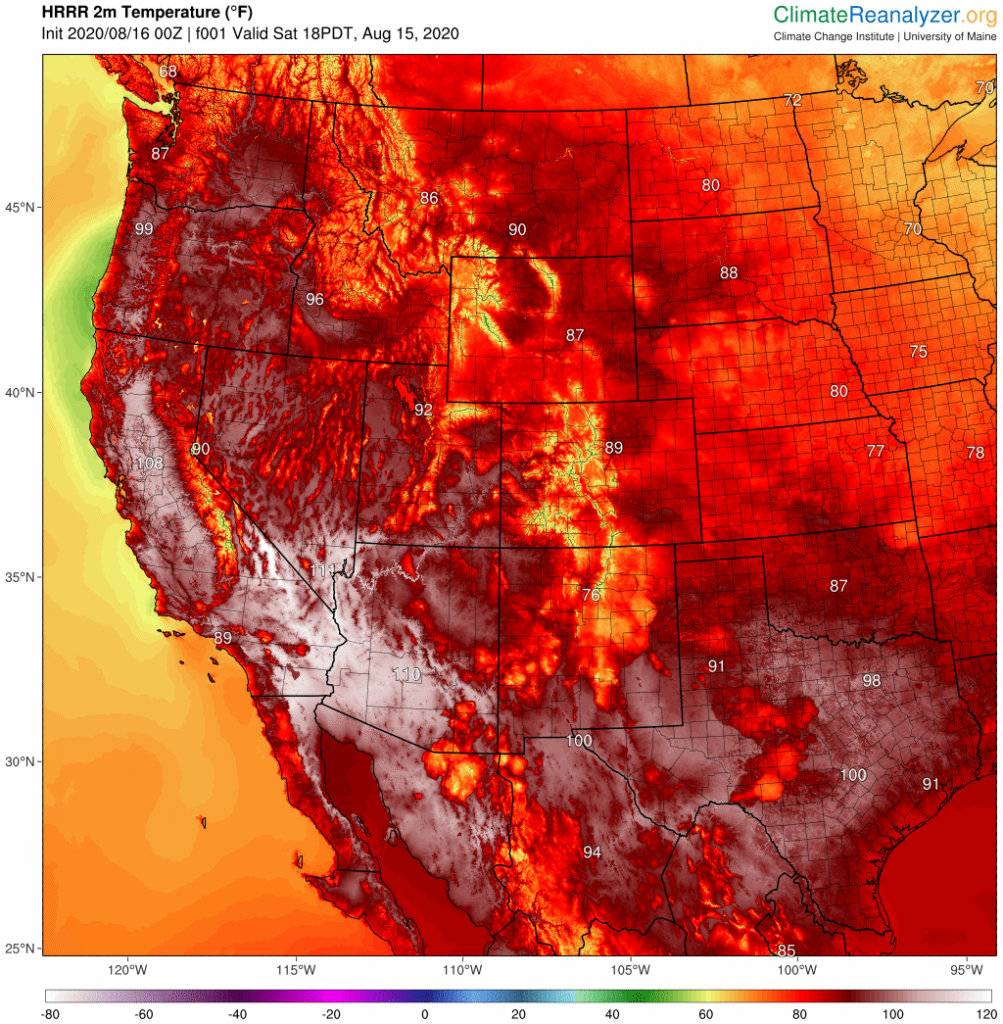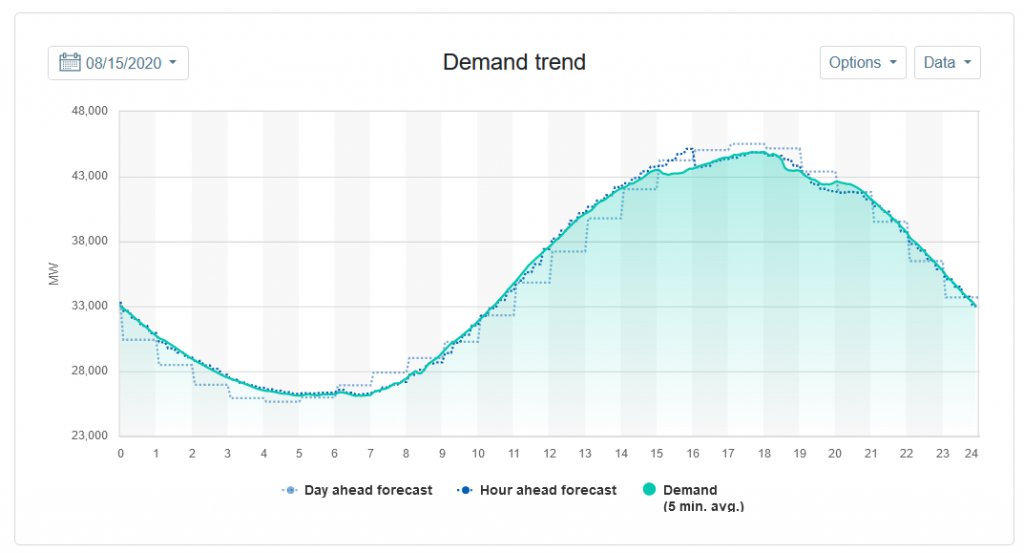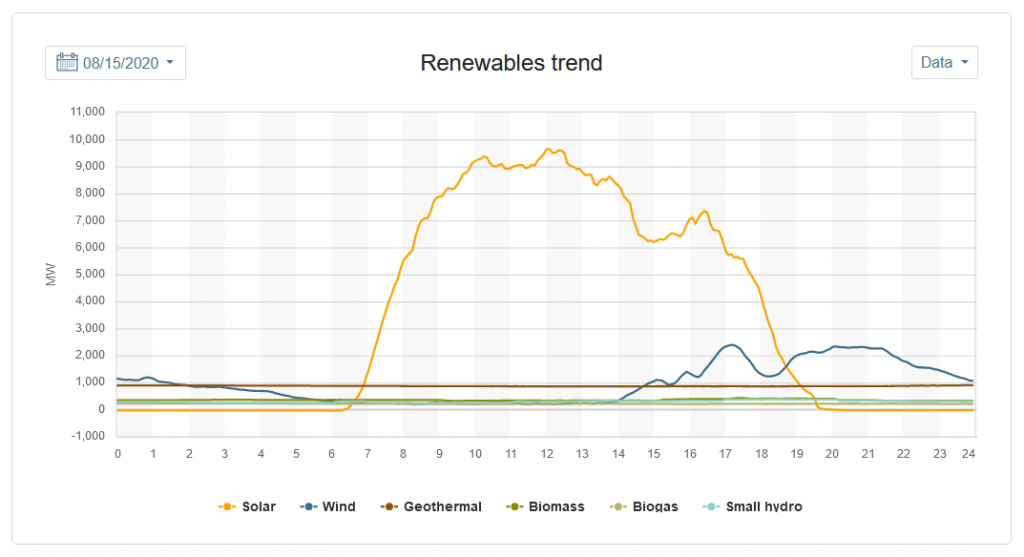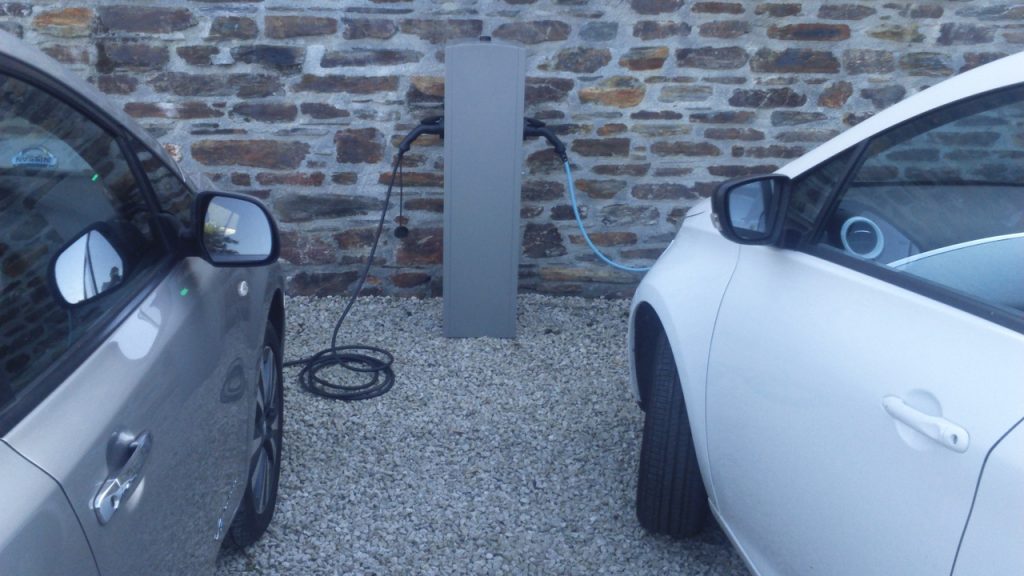Over on the eastern side of the Pacific Ocean there has been a summer heat wave in California:

As a consequence air conditioning works hard, electricity demand goes up, and over the last few days there have been some rolling blackouts across the Golden State. According to the New York Times on August 16th:
As temperatures began to rise in California on Friday and again on Saturday, the manager of much of the state’s electric grid called on utilities to cut power to hundreds of thousands of customers.
But the rolling blackouts on those days left some of the state’s energy experts bewildered. They said that the utilities had plenty of power available and that the blackouts weren’t necessary. The grid’s capacity may be tested in coming days as temperatures are forecast to reach into the triple digits again in some places.
The grid’s capacity was indeed tested in the following days. It’s not clear why the California Independent System Operator (CAISO for short) didn’t issue a call for a voluntary “Flex Alert” on August 15th, but the ultimate consequence was some power cuts. Here’s CAISO’s record of electricity demand and renewable generation that day:


It’s clear that something unusual was happening to solar PV generation on the afternoon of the 15th. See for example the equivalent graph for the following day:

According to the New York Times once again:
The California Independent System Operator, the nonprofit entity that controls the flow of electricity for 80 percent of California, said it acted after three power plants shut down and wind power production dropped. It also cited a lack of access to electricity from out-of-state sources.
Let’s take a look at electricity imports into California on August 15th:

That section of the CAISO web site also reveals that California currently benefits from a modest amount of grid connected battery storage, which was called upon to discharge at about 2:30 PM at the time of the sudden drop in solar generation.
All of which leads us to ask, amongst other things, whether the rolling blackouts could have been avoided had California been able to call upon the services of a large fleet of vehicle-to-grid capable electric vehicles at the critical juncture?
There is also another reason for power to be cut in California. The wildfire season has started early this year, and large areas are still ablaze:
Now let’s move across to the much cooler eastern shores of the North Atlantic, where Storm Ellen was raging yesterday during the peak of the summer holiday season:

Ireland experienced some very strong winds, and hence wide spread power cuts. Here are those winds:
and here are the unfortunate side effects of those winds on ESB Networks‘ electricity distribution grid later in the day:
The latest #StormEllen update from @ESBNetworks:
“104,000 customers remain without power and while crews will continue to work into the night to restore power, it is expected that significant numbers of customers will be without power this evening.”#Ireland #PowerCuts
7/n pic.twitter.com/uzFSgNikba— V2G Limited (@V2gUK) August 20, 2020
All of which leads us to also ask, amongst other things, if the majority of those many tens of thousands of power cuts could have been avoided had Ireland been able to call upon the services of a large fleet of vehicle-to-grid capable electric vehicles at the critical juncture?
Here’s an example of the required technology, photographed in our North Cornwall car park over a year ago:


In ESB Networks’ latest update on Storm Ellen they report that: